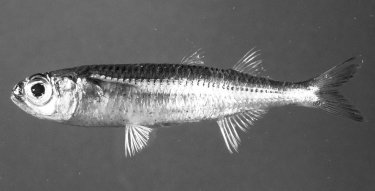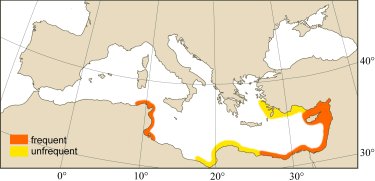 photo : David Darom |
Relevant synonyms
Misidentification
Meristic formula
|
|
|
SHORT
DESCRIPTION
color :
back grey to beige with white belly.
size :
common 2-10 cm (max. 15 cm). |
DISTINGUISHING CHARACTERISTICS
BIOLOGY / ECOLOGY
habitat :
coastal waters, common in lagoons and semi-enclosed seas. |
|
1st
MEDITERRANEAN RECORD
|

|
|
DISTRIBUTION
|
ESTABLISHMENT SUCCESS
speculated reasons for success :
|
|
|
MODE OF
INTRODUCTION |
IMPORTANCE TO
HUMANS |
|
KEY
REFERENCES
|
 Alanetta forsskali
Alanetta forsskali